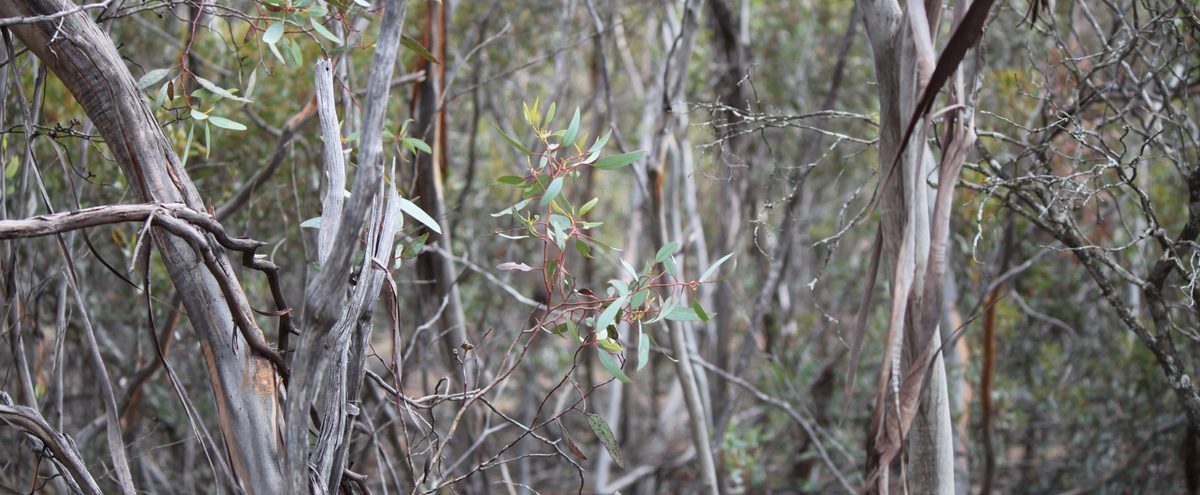
Growing Regional Urban Biodiversity (GRUB)
Growing Regional Urban Biodiversity (GRUB) is an initiative of the landscape board to increase the number of native tree and plant species in public spaces as a way to improve local biodiversity and increase climate resilience.
Regional towns and cities have an important role to play as biodiversity hubs given the number of open spaces, parks and roadsides they manage. The landscape board is working with councils throughout the region to improve the use of native species as a way to grow natural biodiversity, reduce reliance on water and to develop public spaces that are more resilient to changing climate conditions.

Public spaces make up a significant amount of land in many regional towns and therefore offer an excellent opportunity to support native biodiversity by choosing the right species. This also offers an opportunity for the region to become more resilient to future climate challenges by reducing the need for irrigation and by selecting trees and plants that will survive hotter, drier times.
Native species are naturally climate resilient, and including more of them in regional towns and cities will help support surrounding landscapes and habitats.
How will GRUB work?
The landscape board is working collaboratively with several of the regional councils to help share information about the benefits of native species selection and the ways in which native species can be used. In some cases, this might be as simple as encouraging councils to plant native trees on streetscapes. Other uses might be more complex, such as the use of multi-story plantings to mimic native ecosystems. This project will build on the foundations of the Urban Greening Strategy created for metropolitan Adelaide, to encourage similar actions for regional council areas.
In 2024, the landscape board invited a number all regional councils to a webinar featuring woody meadows expert Associate Professor Dr Claire Farrell from the University of Melbourne.
How can I get involved?
If you’re keen to see more native and regionally relevant species in your local public spaces, tell your local council! Community support helps us to work more effectively with councils to create change for your local public spaces.
We'd also like to hear from you if you spot some native plantings by your local council that you really like - share some photos with us. You can email them to us or post them on Instagram tagging @MLandscapeSA and #GRUB to alert us to your post.
You can also ask your local council if they allow residents to establish gardens on roadside verges. These are great ways for community members to establish small scale native gardens with excellent curb side appeal while also helping to boost local native biodiversity.
Why do regional public spaces need more native vegetation?
Landscapes across the Murraylands and Riverland were once dominated by vegetation that sustained native animals and provided a foundation for a range of different ecosystems. These naturally occurring vegetation species have adapted, over thousands of years, to thrive in local conditions, including soil type, climate, rainfall and other factors.
Land clearance has significantly reduced the amount of native vegetation and native ecosystems in the region. In many public spaces, exotic species have been chosen over native species, further reducing the amount of available habitat that native animals – including birds and insects – rely upon.
Our woody meadow trial
This project is testing a new style of urban planting using native Australian shrubs and small trees to create beautiful, low-maintenance landscapes that use less water.
This is the first time the Woody Meadows method is being trialled in SA. It will provide information on how well the dense planting style performs in local soils and conditions.
The Rural City of Murray Bridge council will learn as the planting grows, which plants will grow well, and which plants might not do so well. The landscape board is working with council to monitor the plants growth rates, and the amount of water used to establish them.
These plantings are designed to be low water use and low maintenance when established.
Find out more at our FLOW page.
Murraylands and Riverland Landscape Board GRUB Webinar
Curbside inspiration - how native gardens can change a neighbourhood
You can also get involved in local community planting days and volunteer with non for profit organisations that propagate native plants and trees. Subscribe to our citizen science e-newsletter for more upcoming opportunities.
This project is supported by the Murraylands and Riverland Landscape Board by funding from the landscape levies.
